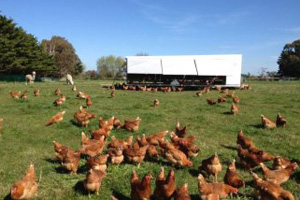Australian free-range sector assesses disease risks

Following the late 2013 outbreak of low-pathogenicity avian influenza (LPAI) in free-range hens and contact farms in Australia, egg farmers have become increasingly nervous about switching to free-range production.
Egg farmers are now nervous about the risk of investing in free-range operations after Langfield Pastoral Company, one of Australia’s top 10 producers, stopped production in late October. All 400,000 hens on the LPC property, and 50,000 on a neighbour’s property were destroyed.
The supermarket chains have driven conversion from cages to alternative systems with adoption of free-range for 37% of current table-egg production, but sources have noted that major supermarket chain Woolworths’ goal to phase out caged eggs by 2018 would not happen as a result of the outbreak.
The pressure is on farmers who were considering a move to “free-range” in the Nation. There has been a realization that flocks allowed outside access are vulnerable to a wide range of erosive and a few catastrophic diseases.
According to press reports, farmers have cancelled plans to expand into cage-free systems which allow access to pasture. There is no insurance against the severe losses associated with diseases such as avian influenza and farmers are not prepared to risk losing flocks and income over prolonged periods. One producer commented on a “1% chance” of contracting AI. Based on the past history of outbreaks in Australia one could project a higher probability, disfavoring any further placement of commercial flocks on pasture.
“The rapid expansion of the free range sector has introduced a number of issues for the commercial production sector,” writes Mingan Choct and Michael Sommerlad in the article The phenomenon of “silver backing” in free range hens. “Firstly, free-range production has not been widely practiced in Australia for many years, and many of the skills required to maintain viable production levels have been lost, with very few poultry professionals possessing the necessary knowledge and experience to assist this sector. The industry will have to re-adjust itself, and embrace the old husbandry skills that have been lost some 50 years ago. Along the way, there will be productivity losses through efficiency drops, biosecurity issues and environmental problems.”













